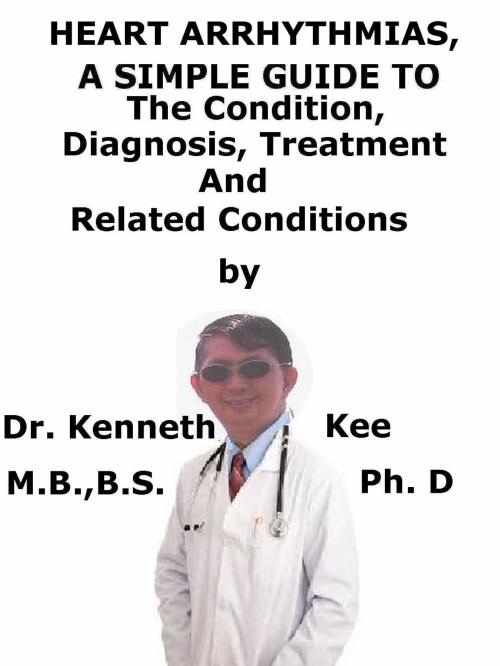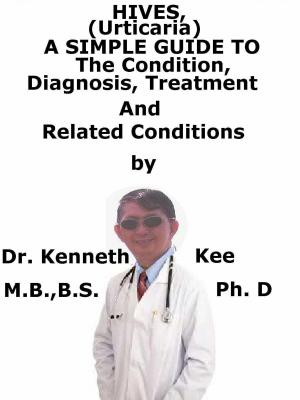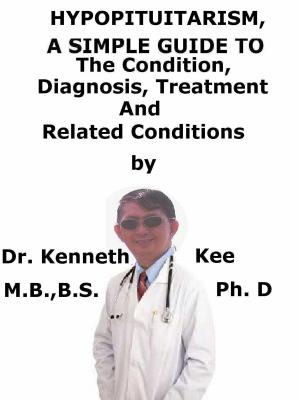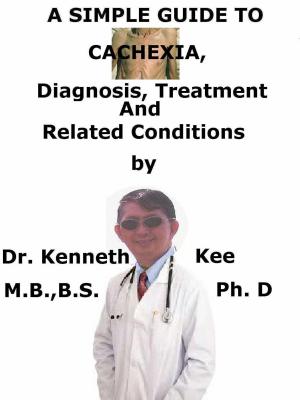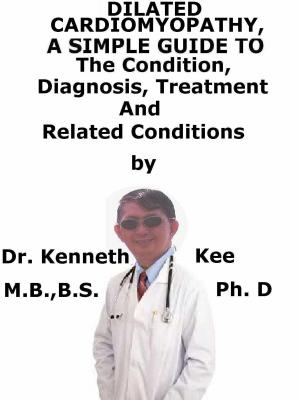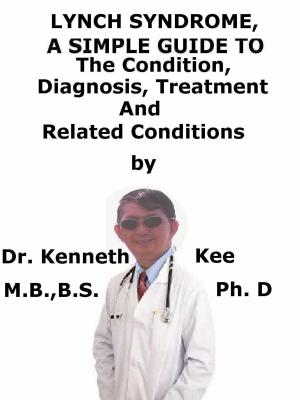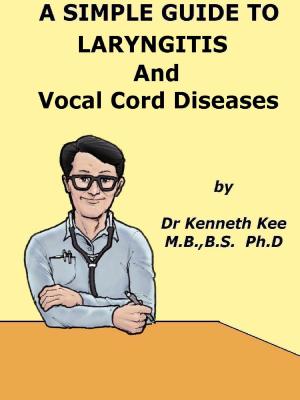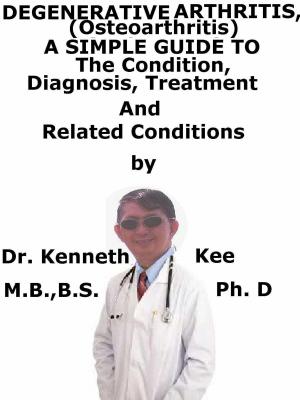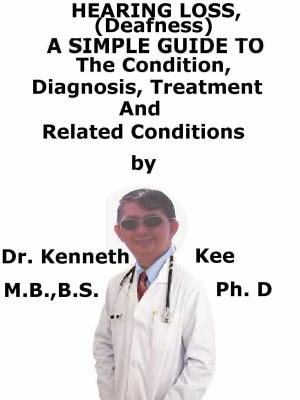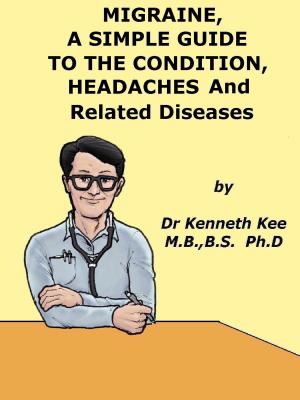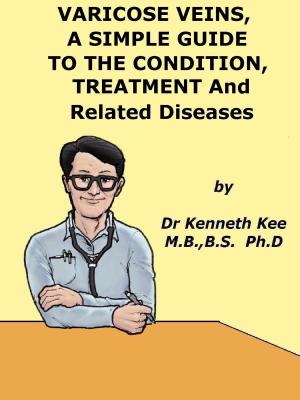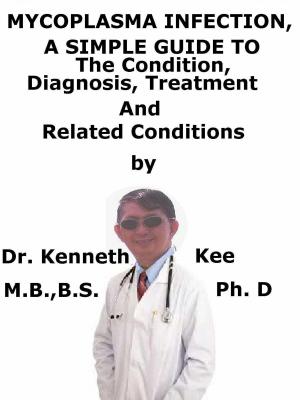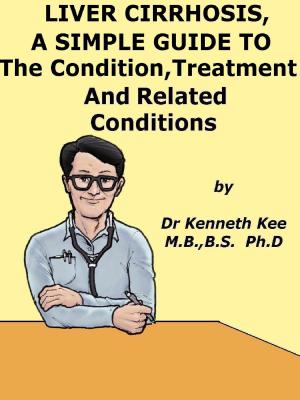Heart Arrhythmias, A Simple Guide To The Condition, Diagnosis, Treatment And Related Conditions
Nonfiction, Health & Well Being, Medical, Specialties, Internal Medicine, Cardiology, Health, Ailments & Diseases, Heart| Author: | Kenneth Kee | ISBN: | 9781370246366 |
| Publisher: | Kenneth Kee | Publication: | September 8, 2017 |
| Imprint: | Smashwords Edition | Language: | English |
| Author: | Kenneth Kee |
| ISBN: | 9781370246366 |
| Publisher: | Kenneth Kee |
| Publication: | September 8, 2017 |
| Imprint: | Smashwords Edition |
| Language: | English |
Arrhythmias are abnormal heart rhythm and heart beat.
There are many types of arrhythmias.
They are categorized by some doctors by where they start in the heart (the atria, AV node, or the ventricles).
When an arrhythmia occurs, the heart can beat too fast, too slow, or with an irregular rhythm.
Tachycardia is a heartbeat that is too fast.
Bradycardia is a heartbeat that is too slow.
Most arrhythmias are harmless, but some can be serious or even life threatening.
The four main types of arrhythmia are:
1. Premature (Extra) Beats
Premature beats are the most frequent type of arrhythmia.
They are not harmful most of the time and often do not produce any symptoms.
When symptoms do happen, they normally feel like the fluttering in the chest or a feeling of a skipped heartbeat.
Most of the time, premature beats do not require treatment, particularly in healthy people.
2. Supra-ventricular Arrhythmias
Supra-ventricular arrhythmias are tachycardias (fast heart rates) that begin in the atria or atrioventricular (AV) node.
The AV node is a collection of cells sited between the atria and the ventricles.
Atrial Fibrillation
AF is the most frequent type of serious arrhythmia.
Signals may move throughout the atria in a rapid, disorganized way.
These cause the walls of the atria to quiver very fast (fibrillate) instead of beating normally.
As a result, the atria are not capable of pumping blood into the ventricles the way they should.
In AF, electrical signals can travel through the atria at a rate of more than 300 per minute.
Atrial Flutter
The heart's electrical signals spread through the atria in a fast and regular—instead of irregular—rhythm.
Paroxysmal Supra-ventricular Tachycardia
PSVT is a very fast heart rate that begins and ends suddenly.
PSVT happens because of disorders with the electrical connection between the atria and the ventricles.
A special form of PSVT is termed Wolff-Parkinson-White syndrome.
Ventricular Arrhythmias
These arrhythmias begin in the heart's lower chambers, the ventricles.
They can be very risky and normally need medical care right away.
Ventricular tachycardia is a fast, regular beating of the ventricles that may persist for only a few seconds or for much longer.
Ventricular fibrillation (v-fib) happens if disorganized electrical signals induce the ventricles to quiver instead of pump normally.
Brady-arrhythmias
Brady-arrhythmias happen if the heart rate is slower than normal.
If the heart rate is too slow, not enough blood enters the brain.
This can induce the patient to faint.
Frequent symptoms are:
1. Palpitations, feeling "skipped beats"
2. Thumping or fluttering in the chest
3. Racing heart sensation
Also, some can have symptoms that are more generalized, such as:
1. Feeling faint or tired
2. Light-headedness or passing out (syncope)
3. Shortness of breath
4. Chest pain or discomfort
The most successful way to diagnose an arrhythmia is with an electrical recording of the heart rhythm called an electrocardiogram (ECG).
2. This is the use of a Holter monitor or ambulatory ECG monitoring wearing a small portable ECG recording device for 24 hours or longer.
The treatments used for arrhythmias are:
1. Medication to stop or prevent an arrhythmia or control the rate of an arrhythmia
2. Electrical Cardioversion
3. Catheter ablation
4. Pacemaker
5. Implantable Cardioverter Defibrillator - ICD
6. Cardiac Implantable Electronic Device Replacement
7. Heart Surgery for Atrial Fibrillation - MAZE
8. The life vest is a personal defibrillator worn by a patient at risk for sudden cardiac arrest.
TABLE OF CONTENT
Introduction
Chapter 1 Heart Arrhythmias
Chapter 2 Atrial Flutter
Chapter 3 Atrial Fibrillation
Chapter 4 Ventricular Fibrillation
Chapter 5 Sick Sinus Syndrome
Chapter 6 Wolff-Parkinson-White Syndrome
Chapter 7 Extra-systole or Premature Heart Beat
Chapter 8 Heart Block
Epilogue
Arrhythmias are abnormal heart rhythm and heart beat.
There are many types of arrhythmias.
They are categorized by some doctors by where they start in the heart (the atria, AV node, or the ventricles).
When an arrhythmia occurs, the heart can beat too fast, too slow, or with an irregular rhythm.
Tachycardia is a heartbeat that is too fast.
Bradycardia is a heartbeat that is too slow.
Most arrhythmias are harmless, but some can be serious or even life threatening.
The four main types of arrhythmia are:
1. Premature (Extra) Beats
Premature beats are the most frequent type of arrhythmia.
They are not harmful most of the time and often do not produce any symptoms.
When symptoms do happen, they normally feel like the fluttering in the chest or a feeling of a skipped heartbeat.
Most of the time, premature beats do not require treatment, particularly in healthy people.
2. Supra-ventricular Arrhythmias
Supra-ventricular arrhythmias are tachycardias (fast heart rates) that begin in the atria or atrioventricular (AV) node.
The AV node is a collection of cells sited between the atria and the ventricles.
Atrial Fibrillation
AF is the most frequent type of serious arrhythmia.
Signals may move throughout the atria in a rapid, disorganized way.
These cause the walls of the atria to quiver very fast (fibrillate) instead of beating normally.
As a result, the atria are not capable of pumping blood into the ventricles the way they should.
In AF, electrical signals can travel through the atria at a rate of more than 300 per minute.
Atrial Flutter
The heart's electrical signals spread through the atria in a fast and regular—instead of irregular—rhythm.
Paroxysmal Supra-ventricular Tachycardia
PSVT is a very fast heart rate that begins and ends suddenly.
PSVT happens because of disorders with the electrical connection between the atria and the ventricles.
A special form of PSVT is termed Wolff-Parkinson-White syndrome.
Ventricular Arrhythmias
These arrhythmias begin in the heart's lower chambers, the ventricles.
They can be very risky and normally need medical care right away.
Ventricular tachycardia is a fast, regular beating of the ventricles that may persist for only a few seconds or for much longer.
Ventricular fibrillation (v-fib) happens if disorganized electrical signals induce the ventricles to quiver instead of pump normally.
Brady-arrhythmias
Brady-arrhythmias happen if the heart rate is slower than normal.
If the heart rate is too slow, not enough blood enters the brain.
This can induce the patient to faint.
Frequent symptoms are:
1. Palpitations, feeling "skipped beats"
2. Thumping or fluttering in the chest
3. Racing heart sensation
Also, some can have symptoms that are more generalized, such as:
1. Feeling faint or tired
2. Light-headedness or passing out (syncope)
3. Shortness of breath
4. Chest pain or discomfort
The most successful way to diagnose an arrhythmia is with an electrical recording of the heart rhythm called an electrocardiogram (ECG).
2. This is the use of a Holter monitor or ambulatory ECG monitoring wearing a small portable ECG recording device for 24 hours or longer.
The treatments used for arrhythmias are:
1. Medication to stop or prevent an arrhythmia or control the rate of an arrhythmia
2. Electrical Cardioversion
3. Catheter ablation
4. Pacemaker
5. Implantable Cardioverter Defibrillator - ICD
6. Cardiac Implantable Electronic Device Replacement
7. Heart Surgery for Atrial Fibrillation - MAZE
8. The life vest is a personal defibrillator worn by a patient at risk for sudden cardiac arrest.
TABLE OF CONTENT
Introduction
Chapter 1 Heart Arrhythmias
Chapter 2 Atrial Flutter
Chapter 3 Atrial Fibrillation
Chapter 4 Ventricular Fibrillation
Chapter 5 Sick Sinus Syndrome
Chapter 6 Wolff-Parkinson-White Syndrome
Chapter 7 Extra-systole or Premature Heart Beat
Chapter 8 Heart Block
Epilogue
